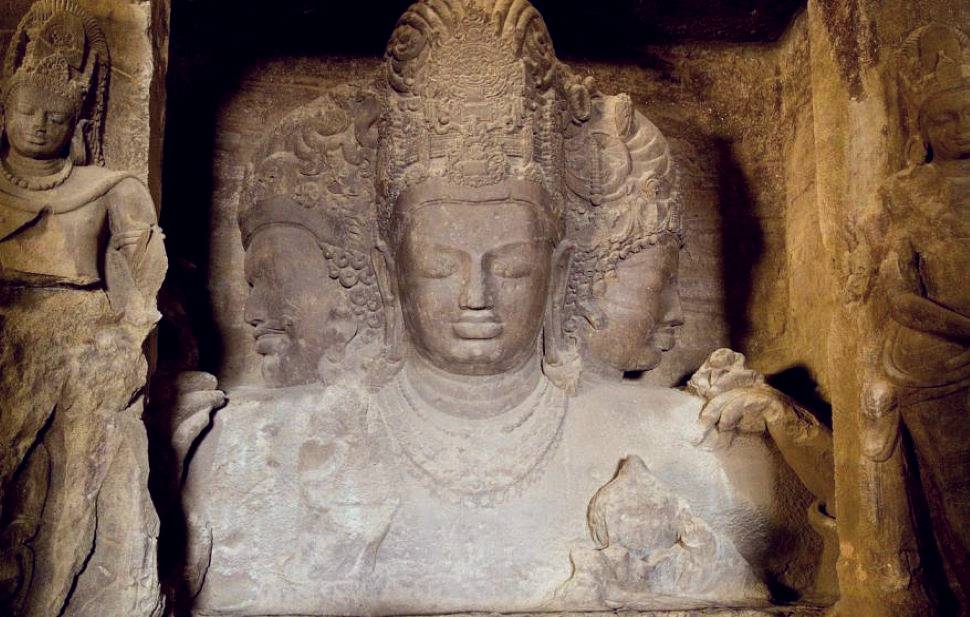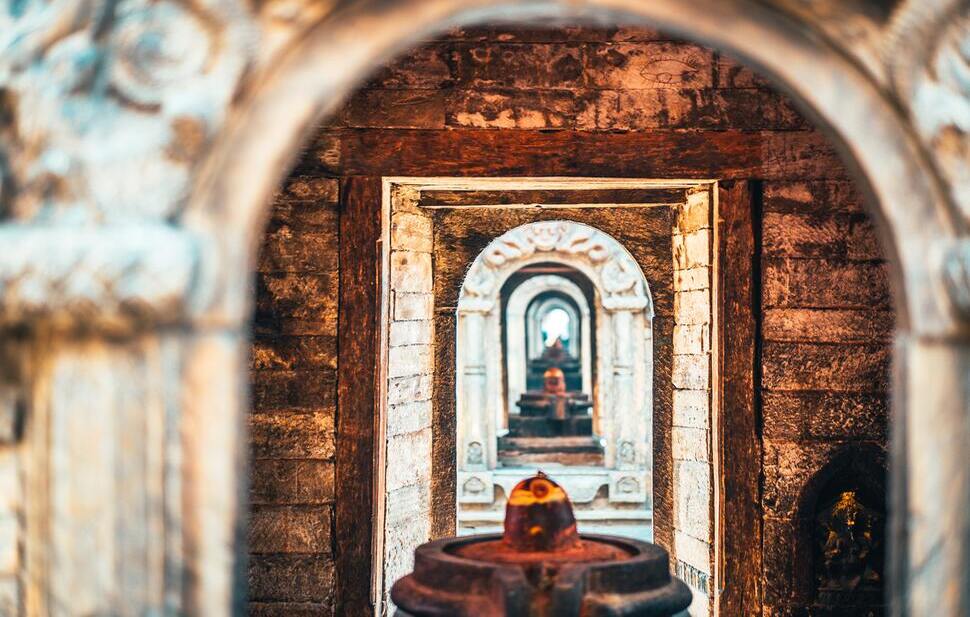During the period between 500-1300 CE Śaivism was the predominant religion of India. The Śaiva tradition was divided into two broad classifications—initiatory Śaivism and lay Śaivism. Initiatory Śaivism, as the name suggests, usually involved an initiation ceremony with elaborate rituals and was therefore generally limited to a specific set of people. Lay Śaivism, on the other hand, was open to all socio-economic groups, its central focus being bhakti to Śiva and the worship of the Śiva liṅga. With its egalitarian impulse, simplified rituals, and devotional focus, lay Śaivism is also associated with Paurāṇic Hinduism.
Based on this divide, two different kinds of Śaiva religious texts were produced during this period—one focusing on philosophy and ritual catering to initiated followers, and the other focusing on devotion and worship to Śiva catering to the religious needs of lay householders. The former category contains a vast trove of largely untranslated religious literature belonging to what we call the Saiddhāntika and non-Saiddhāntika Śaivism, while the latter consists of about half a dozen texts extolling bhakti to Śiva. This latter category of text is called the Śivadharma corpus. Produced around 6th-8th century CE, these are the earliest texts of devotional Śaivism. The Skanda Purāṇa, composed during the same period, was also connected with bhakti to Śiva, but we do not know exactly what the relationship was between the Śivadharma corpus and the Skanda Purāṇa.
The earliest text in the Śivadharma corpus is called the Śivadharmaśāstra, which focuses on the devotional practice and religious observance of the lay devotee. Based on the manuscript and inscriptional evidence, the Śivadharmaśāstra seems to have been an immensely influential text among the Śaivas. While the Purāṇas such as the Śiva Purāṇa and the Liṅga Purāṇa have enjoyed much popularity, the Śivadharma corpus has vanished from public memory—so much so that not even a Hindi translation was available until recently.
However, things have begun to change. A Nepali edition and translations of some of the texts in the corpus was published in 1998 in Kathmandu. In 2014, a Hindi translation was undertaken by Sanskrit scholar Shri Krishna Jugnu, while in western academia there is an ongoing project funded by the European Council of Research (ERC) to unearth all the manuscripts of the Śivadharma corpus and undertake a critical edition and an English translation. This large ERC-funded project will provide a glimpse into the Śaiva-dominated socio-religious life of India during the 6th-10th century. What follows below are some of the highlights of this very important text, consisting of twelve short chapters, undertaken for non-academic readers for the first time.
The Divine Status of a Śiva Devotee
The first chapter of Śivadharmaśāstra begins with an emphatic claim that those who worship Rudra (another name for Śiva) are not ordinary people but have descended onto earth from the Rudra-loka. In multiple passages, Śivadharmaśāstra says that a devotee of Śiva is not a mortal but a divine being. It prescribes eight-fold devotion to Śiva: (1) showing affection towards Śiva devotees; (2) rejoicing when others worship Śiva; (3) worshipping Śiva with devotion; (4) carrying out physical work for Śiva; (5) listening to the recitals of Śiva deeds; (6) getting physical effects from intense devotion to Śiva (7) always remembering Śiva; and (8) dedicating one’s life for Śiva. The text then claims that even the lowliest of devotees of Śiva is equal to him, and should be worshipped as one worships Śiva. In its words:
Even a barbarian (mleccha) who follows this eight-fold devotion is equal to a great sage, an ascetic, or a scholar (paṇḍitaḥ). I (Śiva) do not like the four Veda knowing brahmin as much as I like my devotee, even if he is a dog-eater, to him should be given and from him should be taken, he is as much worthy of being worshipped as I am.
The radicalness of this passage is noteworthy, as the text raises the status of the devotee of Śiva to that of Śiva himself. The great Abhinavagupta quoted this passage in his famous Tantrāloka. Śivadharmaśāstra not only divinizes the devotee but explicitly says that devotees can be of any gender, even the third gender.
The Character of Śiva Devotee
The fourth chapter of Śivadharmaśāstra vividly describes the character of a Śiva worshipper. Here is an abridged description of the moral character of the devotees of Śiva.
Śiva devotees are cheerful, dedicated to worshipping Śiva, always of calm mind, endowed with dharma. They can bear the dualities of life; they are patient, devoted to others, intent on serving their guru, agreeable, speaking good words, devoid of pride, wise, not interested in competing with others, not having any expectation from others, peaceful, happy, of courteous behavior and always welcoming; though they speak less, they are good speakers, always pure in deeds and thought, compassionate, intent on giving, speaking only facts, never back-stabbing others, treating everyone equally, they are neither poor nor stingy, they never speak in anger, they are centered in themselves with controlled mind and sense-organs; with their mind fixed on Rudra, they are Rudra on earth.
The description continues further. The focus on the moral character of the devotee is a constant theme of Śivadharmaśāstra. Given that the text puts the devotee on the pedestal of Śiva, their moral quality must also be in consonance with their divinity.
The Public Nature of Saivism
Śivadharmaśāstra describes a religious tradition that was not confined to the private sphere but had a great public profile. It lays down in great detail the public procession rituals to celebrate the auspicious days of Śiva, which include a retinue of dancers, singers, actors and musicians eulogizing the deeds of Śiva. It exhorts the devotee to construct large temples so that wherever the eyes go, a Śiva temple is visible. It prescribes that devotee should donate two-thirds of their earnings to the cause of Śiva, be it building Śiva hermitages and temples, feeding Śiva ascetics, opening hospitals and dispensaries, digging wells and dams, etc.
The Śaivism depicted in this text is temple-centric; the temple forms the locus of the socio-religious activity of the devotee. The devotee is asked to ensure that the temple is well supplied, well-maintained, and the rituals performed according to the well-laid-out rules. Within the temple is the Śiva liṅga, the worship of which is the highest form of devotion. The text details the religious rituals associated both with the construction of the temple and the worship of the liṅga.
A Distinct Religion
An interesting point to note is that though Śivadharmaśāstra models itself on the lines of the Vedic tradition, yet it maintains its distinctness. For example, rather than the Vedic varṇāśrama dharma, the text espouses śivāśrama dharma, in which the lifespan of a devotee is divided based on his devotion to Śiva. Further, there is hardly any mention of four social classes; instead, every individual is subsumed under the heading of śivabhakta (devotee of Śiva). Even the knowledge of Veda is considered to be inferior compared to devotion to Śiva and performing action for Śiva. The Śaiva tradition, especially certain forms of initiatory Saivism, saw itself not as part of the Vedic tradition but as a separate religious tradition whose texts were a higher form of revelation when compared to the Vedas.
Conclusion
Śivadharmaśāstra is our earliest textual source of devotional Śaivism, and therefore its historical significance is immense. The prescriptive text is addressed to the community of Śiva devotees to guide their daily ritual lives, with promises of worldly prosperity, a place in Śiva-heaven (rudra-loka) and a good birth in the next life, provided that the injunctions of the text are followed. Though the moral prescriptions of the text are onerous, the rituals prescribed are relatively simple and the text eschews any detailed metaphysical discussions.
The text promotes a vision of a religion that is vibrant, ascendant, and a society transcending all differences of caste, creed, race, nationality or gender, united only by devotion to Śiva. This fact had been very well understood by the Chola kings who have instituted large endowments in some of the Śiva temples for the propagation of Śivadharma during the period from 11-13th century. The success and the influence of Śivadharmaśāstra are suggested by the fact that some passages from this text are cited in inscriptions that are found as far afield as the Khmer kingdom of Cambodia and the Champa Kingdom of Vietnam. Its manuscripts are found across the Indian subcontinent from Nepal to Tamilnadu. The expansionary impulse evident in the text would be surprising to many modern Hindus.


